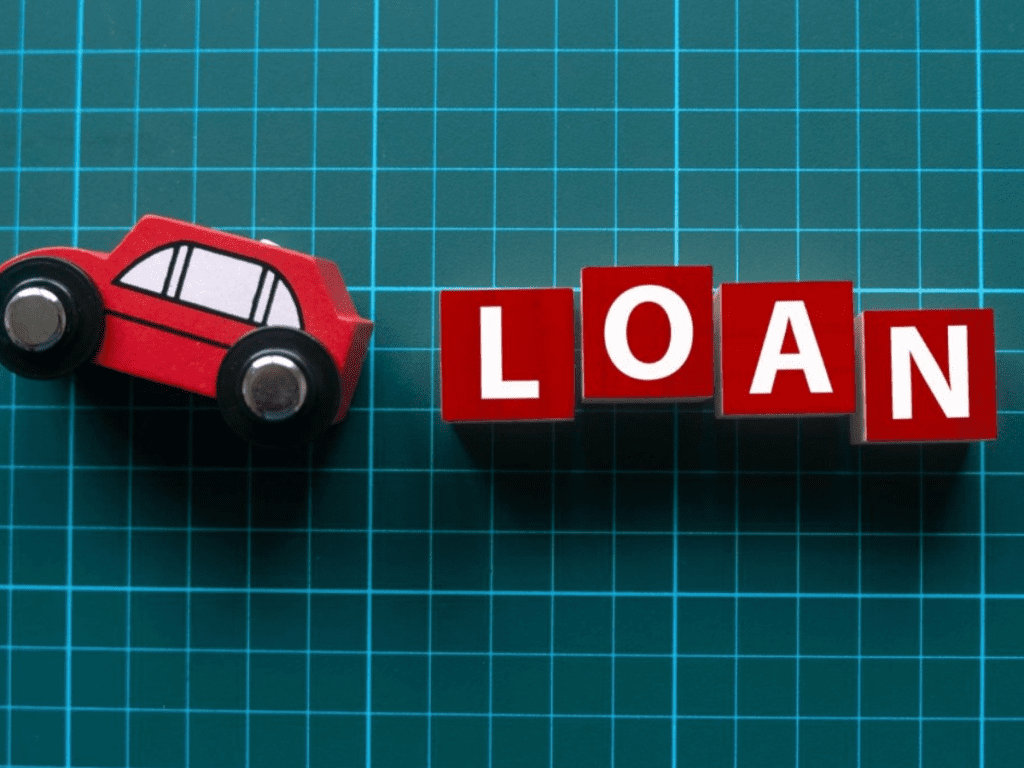Introduction
Purchasing a vehicle is often one of the most significant financial commitments people make. Whether it’s a car, truck, or motorcycle, the financial decision involves not only choosing the right vehicle but also understanding the best way to finance it and ensure it is properly protected through insurance. The financial tools available to help with vehicle purchases include auto loans, while auto insurance policies provide protection in case of accidents, theft, or other unforeseen circumstances. This guide will provide an in-depth look at the different types of auto loans and insurance policies to help you navigate the complex world of vehicle financing and protection.
Auto Loans: Types, Terms, and Considerations
An auto loan is a financial product that allows individuals to borrow money to purchase a vehicle, which is then repaid in installments over a set period. Auto loans are typically offered by banks, credit unions, or other financial institutions. These loans can differ based on the interest rate, loan term, and the type of loan. Let’s explore the various types of auto loans available.
1. New Car Loans
A new car loan is a loan provided to purchase a brand-new vehicle. These loans often come with lower interest rates compared to loans for used vehicles because the vehicle is fresh off the lot and its value is not likely to depreciate significantly in the first few years. Lenders may offer competitive terms, including favorable interest rates, especially if the borrower has good credit. The repayment terms for new car loans typically range from 36 to 72 months, with some borrowers opting for a longer term for lower monthly payments.
Pros:
- Lower interest rates due to the newness of the vehicle.
- Longer loan terms, which means more manageable monthly payments.
- Warranty and support from the manufacturer.
Cons:
- New cars lose value quickly as soon as they are driven off the dealership lot.
- Typically more expensive than used cars.
2. Used Car Loans
Used car loans are loans designed for purchasing pre-owned vehicles. These loans are generally associated with higher interest rates because used cars have a higher risk of depreciating faster and may have an uncertain maintenance history. While these loans may have higher rates, they often come with shorter repayment periods compared to new car loans. The eligibility and loan terms will depend on the vehicle’s age, condition, and the borrower’s credit history.
Pros:
- Lower overall cost compared to buying a new car.
- More affordable monthly payments due to shorter loan terms.
- Potential for a good deal if the vehicle is well-maintained.
Cons:
- Higher interest rates.
- Possible issues with vehicle reliability.
- Shorter repayment terms may result in higher monthly payments.
3. Secured Auto Loans
A secured auto loan is a type of loan where the vehicle itself serves as collateral. If the borrower fails to repay the loan, the lender has the right to repossess the vehicle. Secured loans typically offer lower interest rates because the lender has collateral to fall back on in case of default. These loans are often preferred by those with less-than-perfect credit, as the collateral mitigates the risk for the lender.
Pros:
- Lower interest rates compared to unsecured loans.
- Easier approval for individuals with poor credit.
- Lenders may offer more flexible loan terms.
Cons:
- The vehicle is at risk of repossession if the borrower defaults on the loan.
- Potentially higher loan amounts due to collateral.
4. Unsecured Auto Loans
Unlike secured auto loans, unsecured auto loans do not require the borrower to pledge collateral. This means that if the borrower fails to repay the loan, the lender has no direct claim to the vehicle. However, unsecured loans typically come with higher interest rates due to the increased risk for the lender. These loans are often available to individuals with strong credit histories, as lenders have less security and rely on the borrower’s creditworthiness.
Pros:
- No collateral required, which means the borrower does not risk losing their vehicle.
- Ideal for borrowers with excellent credit.
Cons:
- Higher interest rates.
- More difficult to qualify for compared to secured loans.
5. Lease Buyout Loans
When leasing a car, there is typically an option at the end of the lease to buy the vehicle outright. A lease buyout loan is specifically designed for this purpose. This type of loan allows the borrower to pay off the remaining balance of the lease to take ownership of the car. Lease buyout loans may have terms similar to new or used car loans, depending on the age and condition of the vehicle.
Pros:
- Ability to own a car that may already be familiar to the driver.
- Flexible financing options for the buyout amount.
Cons:
- Higher total cost if the lease terms were unfavorable.
- Limited options if the car is in poor condition.
Key Considerations When Choosing an Auto Loan
When deciding on an auto loan, several factors need to be taken into account. These include the interest rate, loan term, and the type of vehicle being financed. Here are some key considerations:
- Interest Rate: The interest rate is one of the most important aspects of an auto loan. A lower interest rate means paying less over the life of the loan. Interest rates can vary based on credit scores, loan type, and lender.
- Loan Term: The loan term determines how long you will be repaying the loan. A longer loan term typically results in lower monthly payments but higher total interest paid over time.
- Down Payment: A down payment is the amount you pay upfront when purchasing the vehicle. A larger down payment can help reduce the overall loan amount and may result in better loan terms.
- Monthly Payments: It’s essential to choose a loan with monthly payments that fit within your budget. A loan with lower monthly payments may seem attractive but could extend the repayment period and increase total interest.
Auto Insurance: Types and Coverage
Auto insurance is essential for protecting yourself and your vehicle in case of accidents, theft, or damage. Different types of insurance policies offer varying levels of coverage, depending on the needs of the driver and the vehicle. Below are the most common types of auto insurance.
1. Liability Insurance
Liability insurance is the most basic form of auto insurance and is required by law in most places. It covers the costs associated with damage to other vehicles or property if you are found at fault in an accident. Liability insurance consists of two main components: bodily injury liability and property damage liability.
- Bodily Injury Liability: This covers the medical costs of people injured in an accident where you are at fault. It can include medical expenses, lost wages, and even legal fees.
- Property Damage Liability: This covers the cost of damage to other people’s property, such as their car, house, or fence, in the event of an accident.
Pros:
- Minimum coverage required by law.
- Helps protect you financially in case of accidents where you are at fault.
Cons:
- Does not cover your own vehicle’s damages or medical costs.
2. Collision Insurance
Collision insurance covers damage to your own vehicle caused by a collision, regardless of who is at fault. Whether you hit another car or a stationary object, collision insurance will pay for repairs or replacement up to the actual cash value of your vehicle.
Pros:
- Covers damages to your vehicle, even in cases where you are at fault.
- Important for vehicles with significant value.
Cons:
- Does not cover non-collision events like theft, fire, or weather-related damages.
- Can be costly if the vehicle’s value is low.
3. Comprehensive Insurance
Comprehensive insurance provides protection for your vehicle against damages that aren’t caused by a collision. This includes theft, vandalism, fire, weather-related damage, and animal collisions. It also covers damages caused by falling objects, natural disasters, and civil disturbances.
Pros:
- Covers a wide range of non-collision damages.
- Offers peace of mind against unexpected events.
Cons:
- Higher premiums.
- Typically not needed for older vehicles with low value.
4. Uninsured/Underinsured Motorist Insurance
Uninsured/underinsured motorist insurance covers you if you are involved in an accident with a driver who does not have insurance or has insufficient coverage. This insurance protects you from the financial burden of medical expenses and vehicle repairs if the other party is at fault but cannot pay for the damages.
Pros:
- Offers protection when dealing with uninsured or underinsured drivers.
- Can cover medical expenses, lost wages, and vehicle repairs.
Cons:
- Not required by law in all states.
- Additional cost to your insurance premiums.
5. Personal Injury Protection (PIP)
Personal Injury Protection (PIP) insurance covers medical expenses, lost wages, and other related costs if you are injured in an accident, regardless of fault. PIP can also cover the cost of rehabilitation and funeral expenses. It is required in some states, particularly no-fault states.
Pros:
- Covers medical expenses for you and your passengers.
- Offers a wide range of coverage beyond just vehicle damage.
Cons:
- Often expensive.
- May overlap with health insurance coverage.
6. Gap Insurance
Gap insurance is designed for individuals who owe more on their car loan than the car is worth. If your car is totaled or stolen, gap insurance will cover the difference between what you owe on the loan and the actual cash value of the car.
Pros:
- Essential for individuals who have a large loan balance.
- Protects you from financial loss if the car’s value has significantly depreciated.
Cons:
- Additional cost to your insurance premiums.
- Not necessary for all drivers.
Conclusion
Choosing the right auto loan and insurance policy is a critical decision that requires careful consideration. Whether you are financing a new or used vehicle, understanding the different types of auto loans available can help you select the loan that best fits your financial situation. Similarly, selecting the appropriate insurance coverage will ensure that you are properly protected in case of accidents, theft, or other mishaps. By considering factors such as loan terms, interest rates, and coverage types, you can make informed decisions that will benefit you both now and in the future.

